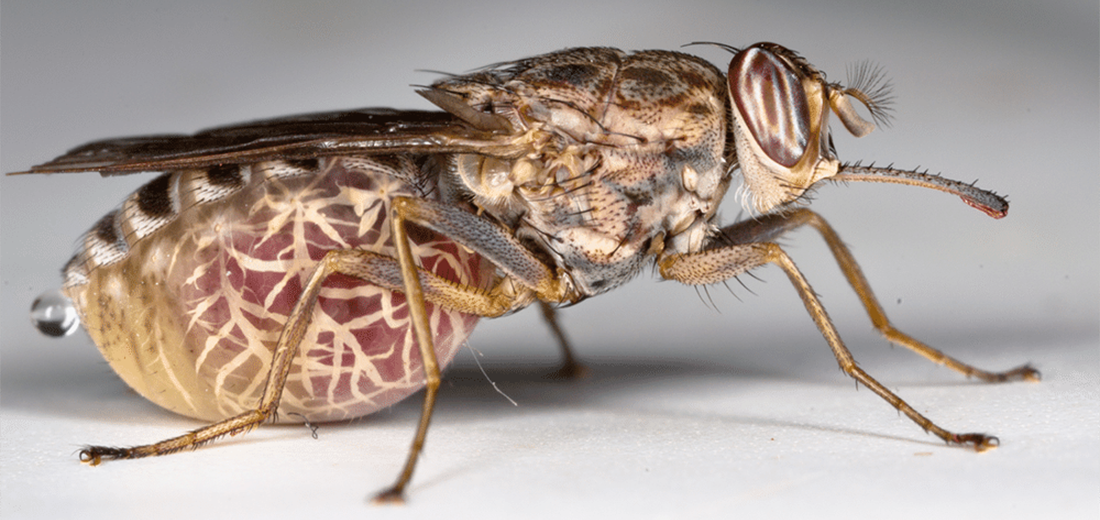
There are 23 known species of tsetse flies that can be found in mid-continental Africa. The tsetse fly can be found in open woodlands. They have been around, unchanged, for about 34 million years. Tsetse flies transmit parasites that induce a fatal disease in humans and animals. People have been waging a war on these pests with pesticides, via sterilization of males, and by clearing and burning the brush where females lay their eggs.
First the Stats…
Scientific name: Glossina
Length: 0.6 inch
Lifespan: Up to 90 days
Now on to the Facts!
1.) Even their larvae are deadly! Tsetse fly larva can excrete a very powerful toxin through pores in its skin. A single drop of this toxin is strong enough to kill an adult human!
2.) Symptoms of a tsetse fly bite are: extreme fatigue, coma, swollen lymph node glands, headache, fever, emaciation, and if left untreated – death! The disease kills 250,000 – 300,000 people annually. The parasite that causes this is called trypanosoma and causes trypanosomiasis.
3.) Tsetse flies are also known as ‘tik-tik’ flies.
4.) Being diurnal (active during the day), they are most active during the hottest part of the day.
5.) These flies are multivoltines (they produce several broods annually). The females mate only once, but they produce up to 4 generations in their lifespan.
But wait, there’s more on the tsetse fly!
6.) Eggs hatch inside the female’s body, one at a time. The larvae feeds on a nutritional, milky fluid that is secreted from the uterine wall.
7.) They feed on the blood of humans and animals. Their mouth apparatus is known as a proboscis and is shaped like a blade.
Did you know…?
These annoying and deadly creatures can drink up to 3x their body weight in blood, in just one feeding.
8.) Male flies go after humans, while females prefer animals.
Now a Short Tsetse Fly Video!
Also, check out the Critter Science YouTube channel. Videos added frequently!
Want to suggest a critter for me to write about? Let me know here.



